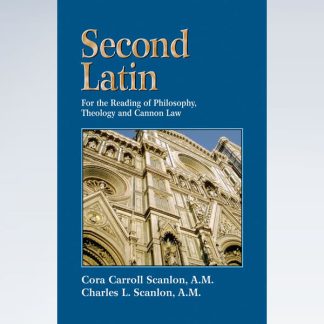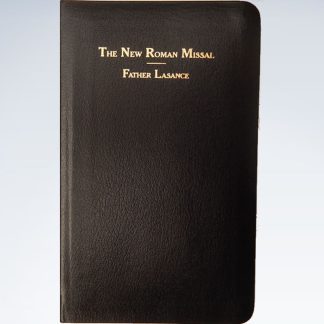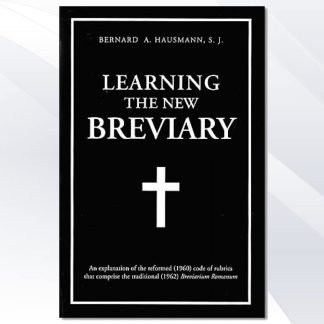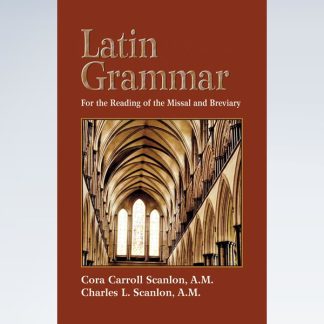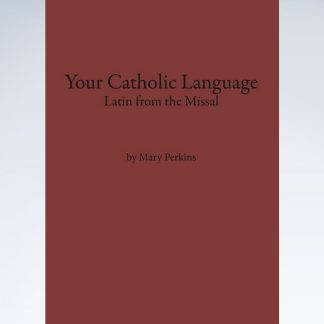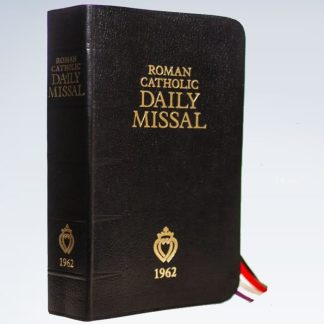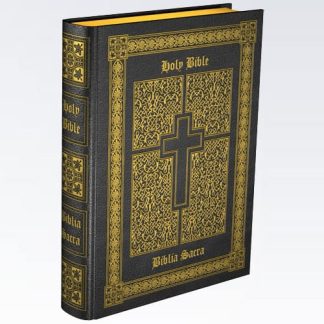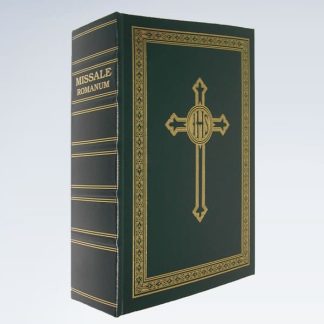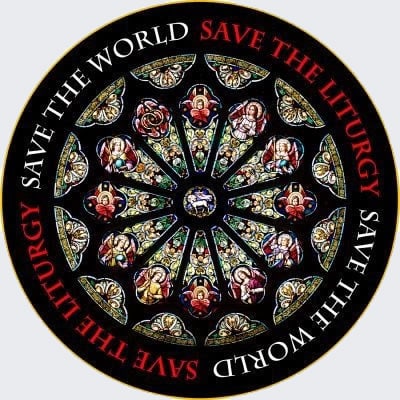Diamond’s Liturgical Latin by Wilfrid Diamond – a simple method of learning the Latin of the Missal for private study and as a class text in high schools, novitiates and study clubs. Liturgical Latin, for the most part, is the common Latin of the people with a vocabulary suited to its use. Some Latin words were christianized i.e., given meanings not found in dictionaries of classical Latin. Variant spellings are also quite common in the ecclesiastical books. Here are over 11,000 words gathered from Scriptures (including the new Latin Psalter), the Breviary, the Missal, and other church books a good percentage of which are not to be found at all in classical dictionaries, and almost all of which have a peculiar meaning in ecclesiastical use.
WHY LEARN LITURGICAL LATIN ?
Liturgical Latin is herein taken to mean the Latin we find in the official text books of the Church (The Bible and the Liturgy) as well as in the works of those Christian writers of the West who have undertaken to expound or defend Christian beliefs.
It is the mother tongue of the Church, the language in which she couches all her official prayers and pronouncements. In view of this dignity, Liturgical Latin should be understood by as great a proportion of the faithful as possible. For he better we understand the language of the Church, the more fully do we participate in her public acts of worship, especially that of the Holy Mass. True, mere participation by devout presence at Mass fulfills our individual obligations, but a fuller participation, through complete comprehension of the language of the Mass, is certainly to be desired.
A knowledge of Classical Latin is not sufficient for this comprehension, for Liturgical Latin differs especially from Classical Latin by the constant introduction of new terms and idioms. Thus, though syntax and literary expression are essentially the same, the student of Classical Latin will be quite unfamiliar with a great many liturgical terms and expressions. As St. Augustine frankly stated to his listeners, “I often employ words that are not Latin, and I do so that you may understand me. Better that I should incur the blame of the grammarians than not be understood by the people.” For Catholics then, a knowledge of Liturgical Latin is a key to the ever developing mind of the Church as expressed in her own individual language.
FOR WHOM THIS BOOK WAS WRITTEN
- Teachers and Students in Catholic High.
- Schools and Colleges, in classes on the Liturgy and the study of the Missal
- Members of Religious Order, Novitiates and Sisters in general using the Missal and reading the Office of the Blessed Virgin
- Seminarians engaged in Catechetical work
- Members of Study Clubs concerned with the Liturgy and the Missal
- For all Catholics using the Missal and interested in the whole Liturgical Movement
UNIQUE FEATURES OF THIS BOOK
The one purpose of Liturgical Latin is to make it easy for the student to read and understand the prayers of the Church and through such understanding to achieve a mastery of the Church Latin. It considers the Latin Mass prayers and explains their meaning by a translation of the Latin into English. To achieve its purpose fully the book incorporates the following features :
- Rules of syntax are limited to the bare essentials.
- Liturgical vocabulary terms and expressions are emphasized throughout.
- Grammatical constructions are interwoven with the text so that they may be more readily grasped as a living part of the language.
- Stress is laid upon memorizing many of the Liturgical Prayers.
- Repetition examination questions at the end of each lesson splendidly summarize the entire content of each lesson.
- The explanations of the uses of the various cases and clauses in Latin study are brief and concise.
In a word, the entire plan of the book makes possible the absorption of Latin with a minimum of effort.
“Wilfrid Diamond began his work to meet a need. A group of Brooklyn laymen who gather together weekly to say the Breviary appealed to him to help them get a better understanding of the official prayer of the Church. From the lessons he gave orally, founded on a good understanding in Latin at the English Jesuit college of Stonyhurst, Mr. Diamond widened his scope of influence by mail. At a personal sacrifice of time and money, he corrected all the exercises himself. Obviously, this cannot be done in conjunction with the text book, but practice with the exercises and correction of mistakes are fundamental principles of success in this course. The questions and repetitions at the end of each exercise are designed to fix the matter in the student’s mind. The vocabularies for practice are taken directly from the Liturgy and not from Cresar or Cicero. This is a book to be used and not merely read.”



